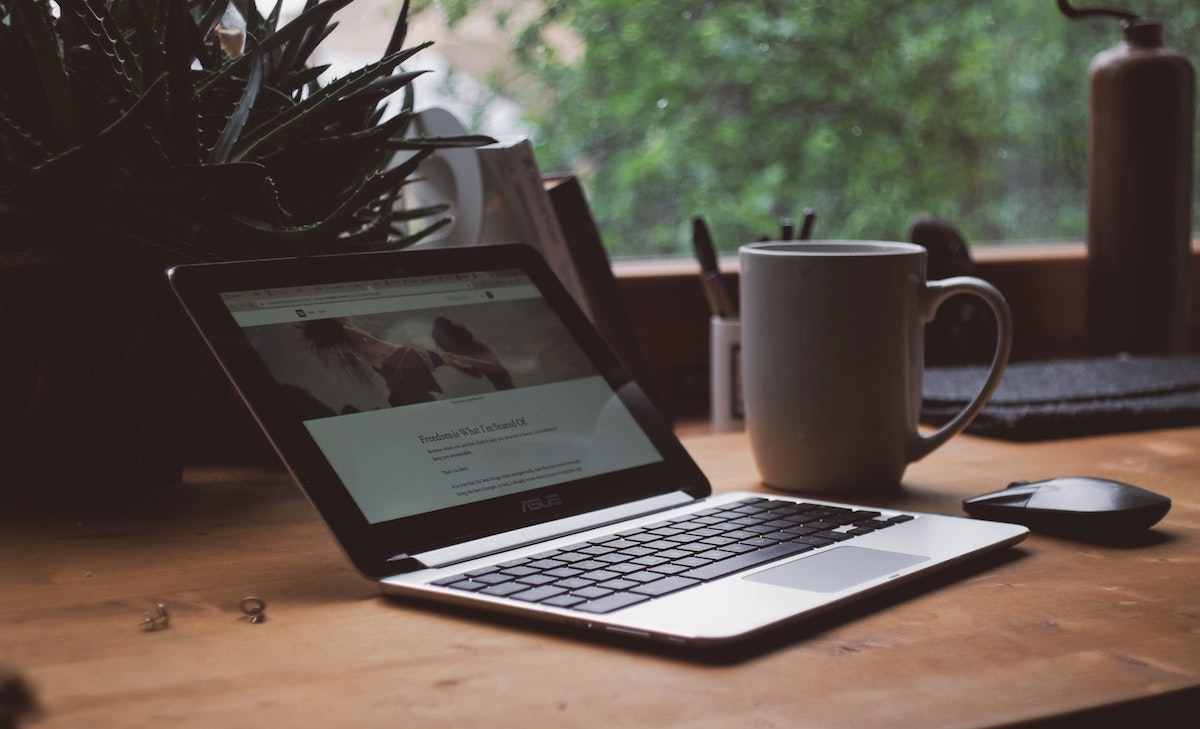Working from home has become the new norm in many companies who decided to opt for a fully remote workforce. Who needs an office when you can log in and do the job from home?
There are plenty of advantages to work from home: saving time on commute, offering flexibility, working from anywhere in the world. But the (apparent) lack of supervision and framework offered in an office can sometimes leave people unclear as to what they should be doing. Some of us find it hard to stay focused or we might need the daily interactions with others.
I compiled 15 tips you could follow to successfully work from home, whether it is for one day or full-time.

Self-care
1 | Set a routine
If you work from home for a day or two, keep the same routine you have the days when you go to the office. You will trick your mind into thinking this is a ‘normal’ working day. Wake up at the same time, do the things you would normally do, and use the extra time that would normally spend commuting for something meaningful (see #3).
If you are starting a new job that is remote, find a routine that works for you the same way you would do for any new job. Think about at what you are supposed to start working, and how much time you need to get ready in the morning.
2 | Get dressed in the morning
The temptation to work in your pyjamas is real, but I wouldn’t recommend it. You might feel okay during the day, but in the evening it will give you the strange feeling that you haven’t done anything productive, since you haven’t changed clothes in 24 hours. I know it’s strange but there is something about looking the part: if you want to have a successful experience working from home, you need to get dressed.
3 | Replace your commute with a self-care activity
No commute means more time for you. It’s important you use that time in a way that serves you best and that sets you for success for the rest of the day. If you can get more sleep, go ahead and set the alarm later (while maintaining your routine afterwards). You can also use this time for meditation, yoga, running, reading – whatever self-care means to you.
4 | Set working hours, and stick to them
Continue using the same working hours of your job if you are working from home for a few days. If you are free to make your own hours, it is still crucial that you create a regular schedule. And that you stick to it. There might be days where you work late, but if it becomes the norm your work-life balance will take the biggest hit. Make sure you check on yourself to see how working hours are affecting you, and set boundaries not to get there.
5 | Take real breaks
Have you ever worried that if you didn’t reply to a chat message within 10 seconds when working from home, people would think you were not working? I have! If you have too, it probably means the “breaks” you took during that day were limited to going to the bathroom or getting a glass of water. Those are not breaks.
What’s a real break then? It’s a pause in your work that allows you to change your mind for a while and to take a mental (and physical) breath. At work we get coffee with a friend, or we have lunch outside (or in the canteen – but not at our desk), or we go do a quick errand.
It might be difficult to do all that when working from home. Still, I would recommend at least 15 minutes away from your laptop in the morning and in the afternoon, plus a proper lunch break of 30 minutes to an hour. Spend it reading something unrelated to work, preparing lunch, making yourself a coffee/tea and drinking it on your sofa, watching TV for a short while, etc.
6 | Go out once a day
Even though the commute is the least favourite part of the day for a lot of people, we never really realise how much we need to get out of the house. I recently coached a client who was working from home for a few weeks and who admitted, to his big surprise, that he was missing his commute for that simple reason: going out. He replaced it with two quick strolls in the morning and in the evening to start and finish the day with a clear mind.

Productivity
7 | Choose a dedicated workspace
If you have a big enough house or apartment, find a space that can be dedicated to work. It doesn’t have to be an entire room, it can be the corner of a room where you can put a desk, at the condition that it is relatively quiet (cf. #7). If you don’t have the space for a desk, I always recommend to work from your dining table, but to sit on a different chair than the one you usually use for lunch and dinner. Because that will not be your usual seat, it won’t feel like you are working and eating at the same place.
8 | Notice distractions
One of the most difficult things to do for some people is to avoid distractions. Home is rarely the place of increased focus. If anything, it’s the place where we start to let go of the focus and the energy we put into our work during the day. Our mind relaxes and gets distracted. This habit can be a blocker when working from home. If you feel like you can’t focus on your work, simply notice what distracts you: are you checking social media, are you on your phone, are you thinking about everything but work?
You can decide to leave your phone in a drawer for a while, or turn off Facebook and Instagram notifications. Write down the thoughts that distract you if they are not related to work so you can go back to them in the evening and do something about them outside your working hours.
9 | Keep a background noise if it helps
Some people love silence to get things done, while others find silence daunting and work better if they hear some background noise. If that’s your case, turn on the TV, put some music or a podcast – create an environment that stimulates you.
10 | Plan your week
Working from home requires a bit more self-drive than in the office, because there is less peer pressure. You can find that self-motivation by gaining clarity on what you would like to achieve. Ask yourself: “at the end of this week, what do I want to be able to say about it?” Then reflect on specific actions you want to take so you can tell yourself it was a great week.
11 | Create a to-do list for the day
Once you have your weekly plan, it will get easier to create a to-do list for each day. You’ll know what to do today and the day after in order to execute your weekly plan.
12 | Keep track of your achievements
Because there is less visibility on what you do, it’s important you keep track of your achievements when working from home. You can use your to-do list as a reference point, or you can create a tracker – a simple word document – where you list at the end of the day what you have done. That will help you look at what is pending, which is something you might want to look at the day after.

Relationships
13 | Stay in touch with your team
Find ways to connect with your team and your manager each day. And I’m not talking about the usual emails and work meetings. I’m talking about the informal conversations that can happen in the office. For instance, you can create a separate group chat for small talk, sending memes or making jokes and random comments. You can also book a remote coffee break with a work friend: you both get coffee or tea, and chat over a videocall the way you would in the office.
14 | Let the people you live with know you are working
The tips in the article mostly revolve around setting some boundaries for you to adopt a professional mindset in a place that is not for business (your home). One of the boundaries that is important to define is with others who live with you. It can be your wife/husband/partner/girlfriend/boyfriend, it can be our roommates, it can be your kids. Let them know that you are working and that they should avoid distracting you during working hours. Share with them the schedule you defined (#1 and #4) so they know what to expect. If they are at home during the day, you can go chat with them during your breaks (#5), but let them know it’s a short break.
15 | In videocalls, turn the camera on
Last but not least, we finish on a light note, but on a true one: if you have videocalls, turn the camera on. There are two reasons for that and they are about professionalism. The first one is that you want to show people that you are not in your pyjamas on your bed, that you keep your professional appearance even at home (remember, dress the part, #2). The second one is that it is impossible to gauge engagement if people don’t see you in the call. Show them you are actively listening and that you are not doing something else.

